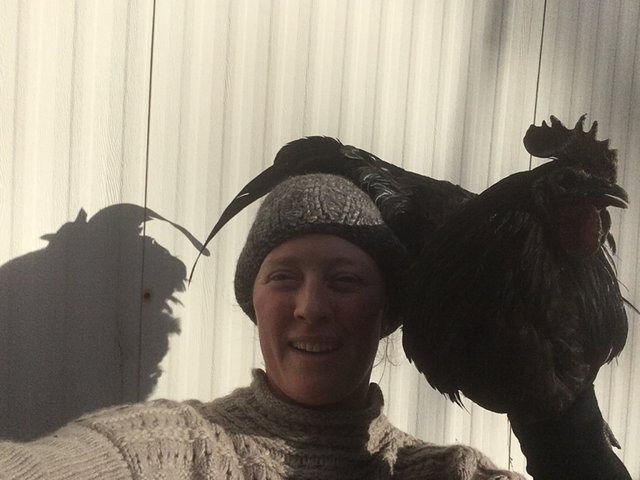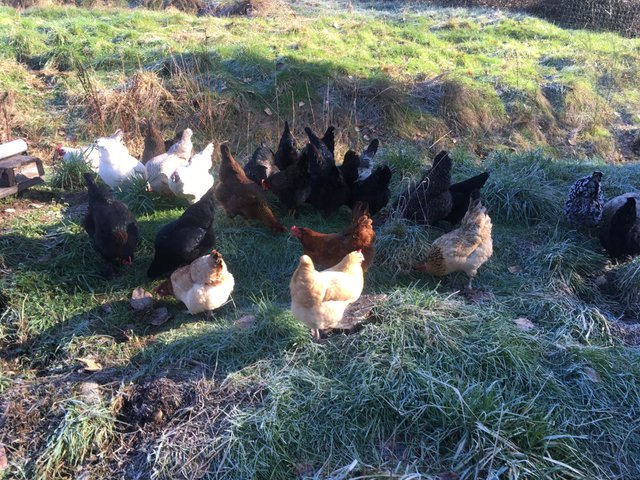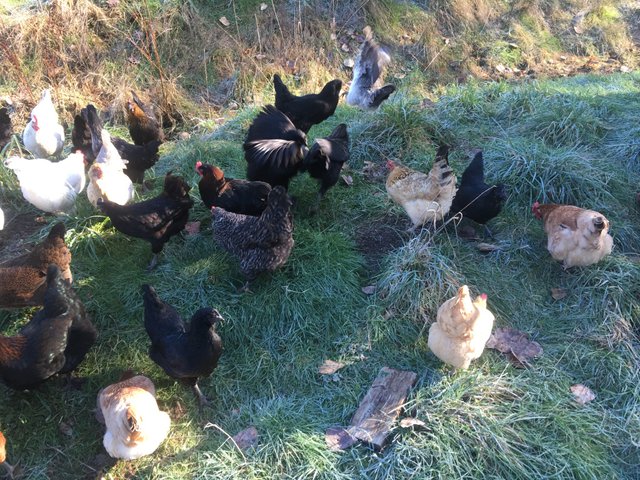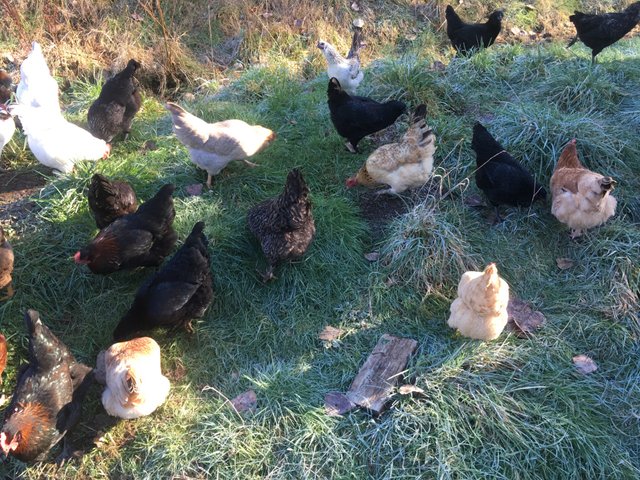For the Birds!

The black cockerels are revving up for Spring, and we’ve got eggs in incubation. The incubator can’t handle the weight of a full 24 eggs, but at 18, we’re in business! Our laying flock of hens is at about 40 birds, and that’s more than enough to full-fill demand for eggs in our small community of consumers. This summer we’ll be at our largest production level ever, and I’m not sure, but with the egg co-op getting off the ground for sure this year (the egg washing equipment is online!), Leafhopper Farm might have enough eggs to sell a case!

Because these ladies are “pastured” (out all day on the landscape in a free-range electric mesh setup), they already have a “higher value” in the egg market. On top of that, we feed our hens USDA organic Scratch and Peck feed. That’s a second “higher value” tier, which our farm is proud of. The grain is our preferred brand not only for it’s organic certification, but also because it’s a loose grain. Meaning, there is no cooked pellet in the mix. Pellet grain is always cheaper, but at a cost, since it’s cooked, the grain has lost much of it’s nutrition. It’s also a glob of uniform feed, preventing the bird from selecting what she needs for her body at a given time. The Scratch and Peck grain has loose minerals, at least two different grains, legumes, and other seeds. Hens pick what they want from that spread and receive a balanced diet with pasture supplement.

The flock is starting to turn black, which makes sense with the rooster genes being all Ayam Cemani. We’ve now got three pure bred hens, along with a new young roo who will be kept for future breeding (he has yet to be named). This gives us 3 breeding roosters. It’s a great investment for the long term viability of this flock and I’m excited to see what the next generation will bring. I have noted that crossing Cemanis with Road Island Reds is not a good combination. It seems to favor the less desirable characteristics of both breeds, including smaller body and slightly exaggerated beak length. This is something to take note of, and will remove RIR from our flock.

The merans are laying now, pullet eggs are small, but yummy. I mix them in with the regular eggs, as my clients love having a few small egg servings, especially for breakfast. The larger eggs are favored for baking. Meran eggs are dark, almost chocolate, and will be when they are fully mature. In the picture above, you can see two wheaten merans and a copper too. We will not be buying new birds this year (I hope!), and our last chicks were all Cemani dominant, so black is taking over.
On another note: Leafhopper purchased some Barnevelder hens last summer, because the breed is rarer, Dutch, and I loved the look of the hen, so I wanted to mix in those genetics to the flock. I bought the chicks at Monroe Coop, and do not know who the breeder was. This is sloppy work on my end, as I am ultimately responsible for the ignorance of this issue. To make a long story short, the hens came from a bad breeder. I know this because two hens recently showed up with health issues attached to bad genetics. One hen was stunted, and having trouble with mobility, she had a sister with the same issues, and they both had elongated beaks with poor comb development. It was bad, and I culled both hens to avoid genetic contamination. The other 4 Barnevelders are great, looking healthy, and beginning to lay. However, the bad genetics could still be lurking in their genes, and it could continue to damage flock health in future.
In buying chicks from a breeder, make sure the person selling you animals is credible. This goes for buying and animals, from livestock to pets. Because of poor breeding practices, sick animals keep showing up and the contamination to healthy genetics holds back the breed. This can be catastrophic, especially when working with rare breeds, like the Barnevelders. This was a lesson in risky buying, something I won’t do again! Always take note of where your animals come from, and know the breed well. This helps you select the best breeder to buy from, investing in clean, healthy genetics for your future, and the future of the breeds.
Liz Crain
@leafhopperfarm

To learn more about Leafhopper Farm visit us at:
LeafhopperFarm.com, YouTube, Twitter & Minds
Congratulations! This post has been upvoted from the communal account, @minnowsupport, by dudebro from the Minnow Support Project. It's a witness project run by aggroed, ausbitbank, teamsteem, theprophet0, someguy123, neoxian, followbtcnews, and netuoso. The goal is to help Steemit grow by supporting Minnows. Please find us at the Peace, Abundance, and Liberty Network (PALnet) Discord Channel. It's a completely public and open space to all members of the Steemit community who voluntarily choose to be there.
If you would like to delegate to the Minnow Support Project you can do so by clicking on the following links: 50SP, 100SP, 250SP, 500SP, 1000SP, 5000SP.
Be sure to leave at least 50SP undelegated on your account.